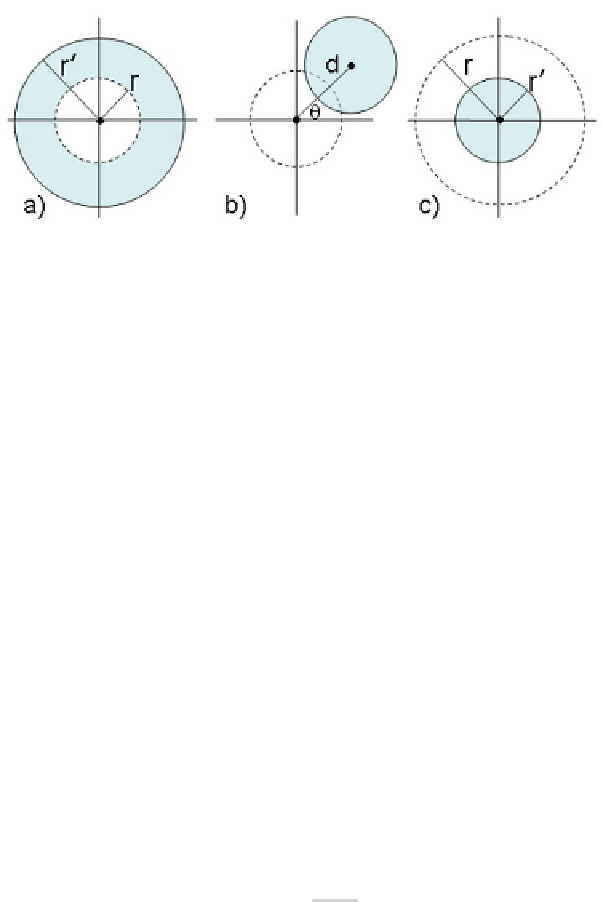Databases Reference
In-Depth Information
Fig. 1.
Enlarging (a), shifting (b), and reducing (c)
4.2 Obfuscation Techniques
We present some obfuscation techniques that reduce the location accuracy of a
location measurement until the privacy preferences are achieved. In particular,
each technique takes
λ
as input and computes
R
Priv
and the obfuscated area.
Enlarging the Radius
Enlarging the radius of a location measurement represents the traditional
solution adopted in the context of location privacy protection. Given a location
measurement
Area
(
r, x
c
,y
c
), an obfuscated area
Area
(
r
,x
c
,y
c
) is generated,
where
r
>r
(see Fig. 1(a)). The obfuscation effect directly derives from the
fact that the joint pdf associated with the obfuscated area decreases, that
is,
r, r
∈
IR
+
:
r<r
⇒
R
Priv
of the
location information after spatial obfuscation can be derived from
∀
f
r
(
x, y
)
>f
r
(
x, y
). The relevance
R
Tech
by
considering the ratio of the two pdf as a scalar factor:
r
2
r
2
·R
Tech
,
f
r
(
x, y
)
f
r
(
x, y
)
·R
Tech
=
with
r<r
R
Priv
=
(2)
0, the radius of the obfuscated area
r
is
calculated from (1) and (2) as follows:
r
=
r
√
λ
+1
Given a privacy preference
λ
≥
This relation permits to generate the obfuscated area by enlarging radius
r
to radius
r
, which satisfies, according to our semantics, the user privacy
preference
λ
. Note that, if the privacy preference of the user is provided by
means of a minimum distance (i.e., radius
r
) relevance
R
Priv
of the obfuscated
area is always calculated by equation (2).

